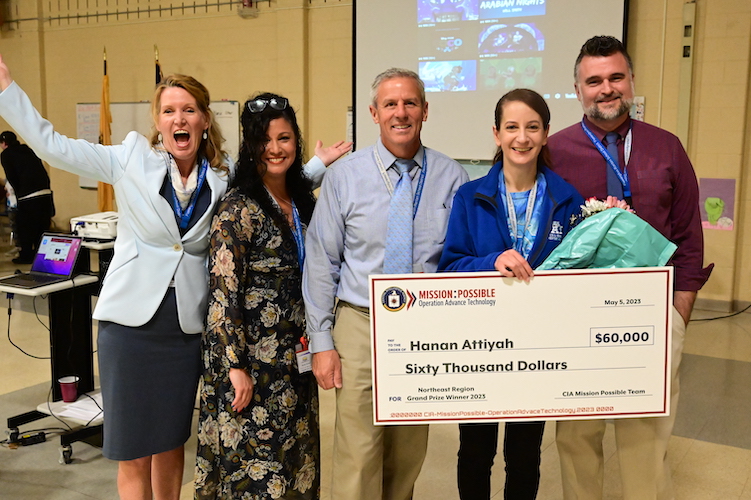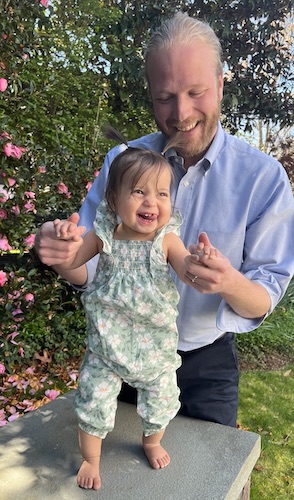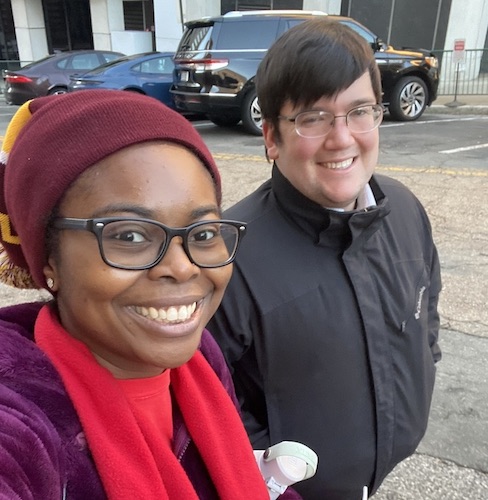Views From the Classroom
W&M alumni teachers share their perspectives on the education crisis
October 23, 2023
By
Gabriela Trauttmansdorff ’26
and
Tina Eshleman
Editor's note: This is an online companion to the cover feature "Rising to the Challenge" in our fall 2023 W&M Alumni Magazine.
For William & Mary alumni who teach in K-12 schools, the COVID-19 pandemic deepened previously existing challenges and prompted innovative strategies to better engage students in learning.
“What the pandemic showed us, essentially, is the extreme digital divide we have between socioeconomic groups,” says Hanan Maarouf Attiyah ’04, a technology integration specialist at Francis A. Desmares Elementary School in Flemington, New Jersey. “Things like internet access for students to attend a class online were major issues.”
Attiyah noticed, for example, that some of her students were able to participate in Zoom classes from a comfortable desk setup, while others struggled to simply find a quiet place to sit. The shift to remote instruction also meant that her students missed out on developing key social skills, making their return to in-person classes that much more difficult.
“If you were alone and maybe not in the best learning environment, you just took away that developmental time and now that puzzle piece is missing,” she says. “How do you continue to build the puzzle without that piece?”

For Attiyah, part of the answer lies in providing resources for students to gain access to different types of technology and extracurricular activities, beginning in their elementary years. To that end, she entered a “Mission Possible: Operation Advanced Technology” competition and was one of five teachers in the United States to receive a $60,000 grant this past spring from the Central Intelligence Agency in collaboration with the Oak Ridge Institute for Science and Education.
In a video she created to explain why her school deserved the grant, her students dressed as news reporters and CIA agents who revealed the abysmal state of technology at their school in comparison to the rest of the world. As a result, they decided to take action to improve their resources. Funds from the grant allowed Attiyah’s school to invest in more technology.
“I converted the computer room to a STEM lab and we put everything that we won with the grant money in the lab. I’ve got magnetic walls, Lego walls, five 3D printers, robots and more,” Attiyah says.
“Now we have a space at this school where students can come and learn how to use all of these tools in the classroom,” she says, noting that 40% of the students in her school are considered socioeconomically disadvantaged as measured by eligibility for free and reduced-price lunch. While more affluent students have such tools available to them outside of school, “now these kids have exposure to them.”
Attiyah began teaching after being offered a job at a William & Mary education careers fair. As an undergraduate, she majored in international relations with a focus on the Middle East and a minor in educational studies. After starting her career, she pursued a master’s degree in instructional technology.
Attiyah says she hopes that the “Mission Possible” grant is just the start of expanding STEM resources into schools.
“The goal is that we have one of these labs in every elementary setting,” she says. “STEM isn’t just for middle schoolers or high schoolers. Those 21st-century career readiness skills start here and they start with the high level of student engagement that STEM brings.”
Measuring ‘Number Sense’
Math and science teacher John Barclay ’13, M.A.Ed. ’14 has noticed a decline in what he calls “number sense” — the ability to understand and conceptualize numbers — among his students during the pandemic.
“In the same way that fluency and the ability to read make up the underlying core that defines whether a student succeeds in an English class or not, there is an underlying core in math,” says Barclay, who teaches students in grades 6-12 at Franklin Military Academy in Richmond, Virginia. He is the 2023 Virginia Math Educator of the Year for middle school math.

To help measure the concept of number sense, Barclay adapted an online game that gives students a randomly generated set of four numbers that they use to add, subtract, multiply and divide to equal 24. By having students log their weekly scores, he was able to track their progress, and he found that how students performed in the game was comparable to how they performed in the math portions of Virginia’s Standards of Learning tests and on an extensive national assessment. Barclay wrote about his findings in the journal published by VASCD (the Virginia affiliate of the Association for Supervision and Curriculum Development).
“It’s surprisingly good data for a simple game,” he says. “It seems the difficulty in retaining concepts recently taught is indicative of the fact that kids are missing foundational skills.”
In math education, students start memorizing when they stop understanding how their existing math skills — such as counting by fives and multiplication — are related to a new concept, he says.
“You see that with low-performing kids all the time. What I see happening more is that middle-tier students are doing that — students who typically would display indicators of numerical fluency are instead seeing math as tasks and lists and checkboxes.”
If students are able to grasp the concept that all math is an extension of counting, then they will be better prepared to learn subjects such as geometry, surface area and probability, and thus perform better on standardized tests, Barclay says. “All of these specific concepts are more accessible to them because they understand how to work with numbers and what numbers represent.”
In the classroom, Barclay has adjusted his approach to provide more individual attention to students. He draws a comparison to language arts classes in which students are separated into different reading groups based on their level of progress.
“I try to do something like that in the math classroom,” he says. “We can do some activities together, but there are also targeted activities based on students’ performance on assessment data like their scores in the ‘24 game.’”
Barclay is hopeful that the attention focused on pandemic-related learning losses, particularly in math and reading, will lead to solutions that will serve students well for years to come.
“We need systems in place that say, ‘Hey, a student is struggling with this foundational math concept. Here’s how we can diagnose it and address it,’” he says. “I think that when you can get society focused on a problem, you can get really great byproducts. I’m excited to see what that will be.”
Advocating for Teachers
Jamestown High School social studies teacher Alynn Parham M.A.Ed. ’18 was sworn in as president of the Williamsburg James City Education Association at the height of the pandemic on July 1, 2020. She ended that role this past summer, but continues serving on the Virginia Education Association Board of Directors, advocating for members from Hampton to the Richmond suburbs and seeking more funds to hire teachers and help students regain skills.

“Educators have been bringing up specific issues since the pandemic started and, of course, post pandemic,” she says. Among those are teacher recruitment and retention, student mental health and behavioral issues, the need for more special education and multilingual services, and funding at the local, state and national level.
“With so many people and so much social media now being focused on an education crisis, everyone is now seeing that there is, in fact, a crisis happening,” Parham says. “It’s not new, but people are now seeing it.”
In some ways, the public attention compounds the problem, she says: “With standardized test scores dropping, there is a push to find more data as to why the scores are dropping, which leads to more meetings.” When teachers are pulled into additional meetings, they lose time to plan and prepare for their classes, Parham adds.
On the bright side, she has observed Williamsburg-James City County leaders and administrators at local schools doing the best they can to address challenges and support teachers. As an educator, she has been recognized for implementing a new African American history course, and she continues to find inspiration and motivation through interactions with her students.
“That’s why we all get into this profession,” she says. “When you have students who want to do well and they know you are going to help them, it makes teaching easier, with all the other factors happening around you. It makes you want to go into work the next day.”